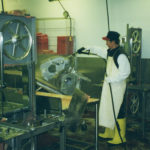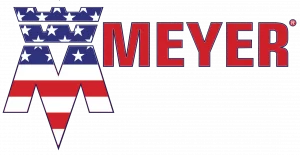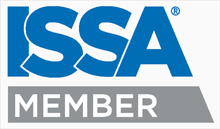How to Properly Sanitize Food Manufacturing Equipment
Proper cleaning and sanitization are paramount in the food manufacturing industry, helping to protect customers as well as reinforcing the reputation and success of the business.
This article describes how to properly sanitize food manufacturing equipment to help ensure you are following the proper processes and guidelines to meet the requirements of safe food manufacturing.
The Sanitization Process in Food Manufacturing
Sanitizing food manufacturing equipment requires several steps to meet at least the minimum requirements.
Certain facilities and products may have even more stringent requirements beyond these steps:
- Dry clean: This first step fulfills the surface removal requirement of the cleaning process, and includes good
 hygiene practices such as sweeping and cleaning the area around the machine.
hygiene practices such as sweeping and cleaning the area around the machine. - First rinse: Use hot water to continue removing surface contaminants and begin the process of loosening and neutralizing food residues.
- Scrub with foaming cleanser: Use detergent to penetrate and remove any remaining residues.
- Second rinse: Use hot water to remove detergent and remaining surface soils.
- Inspection: Check for any missed residues or soils.
- Drying and Reassembly: Carefully follow handling and reassembly processes, taking care to avoid recontamination.
- Inspection: After drying, inspect the machine and the surrounding area, focusing on identified critical inspection areas.
- Sanitization: Using a manufacturer-recommended sanitizer that meets the contaminant reduction needs of your application, completely cover the equipment in sanitizer, allow it to destroy micro-organisms and other contaminants, then remove it according to instructions.
These steps are the underpinning of any effective sanitization process. Print and post the handy checklist below as a training tool for employees responsible for sanitizing equipment.
Sanitization Best Practices
While carrying out your sanitization process, keep the following tips and best practices in mind:
- Always use hot water in rinses. Water should be hot enough that you need gloves while handling it.
- Use foam (for detergents) and spray (for sanitizers) to achieve the greatest efficacy and coverage of the material in use.
- Whenever possible, allow equipment and components to air dry rather than manually drying, to reduce the chances of recontamination.
- In rinsing and scrubbing processes, avoid pressurized water. Instead, use manual processes so that cleaning and sanitization materials remain in contact with the surfaces to be sanitized, and do not further spread potential contaminants.
- Use lint-free towels when handling components, and when manual drying is necessary.
- Don’t skip repeated steps such as rinses and inspections — every part of the process is critical to proper sanitization.
- Sanitization goes beyond the machine. Be sure to inspect and address the areas around equipment, as well.
With these steps and tips, you’re now ready to properly clean and sanitize your food manufacturing equipment.
About the Author: Kathy Avdis is Marketing Systems Manager for Meyer Industrial, which focuses on engineering and manufacturing premier system components for dry bulk material processing equipment, pneumatic conveyors and dust collectors. Avdis has been with the company for 27 years, currently in IT managing many electronic media projects such as websites and webstore — and is administrator for CRM program Salesforce as well as the Configurator/quoting program.
Visit meyerindustrial.com to learn more
References used in writing this article
- https://www.slideshare.net/MeyerIndustrial/sanitation-checklist
- https://www.2xlpro.com/clean-insights-blog/sanitizing-food-processing-surfaces-and-equipment/
- https://www.zwirnerequipment.com/blog/cleaning-sanitizing-equipment/
- https://www.goodway.com/hvac-blog/2020/11/the-final-step-sanitizing-in-food-manufacturing/
- https://www.carter-wilson.com/blog/450-how-to-clean-food-processing-equipment-without-chemicals
- https://cleanmethod.com/blog/cleaning-your-food-processing-plant/
- https://www.orkin.com/commercial/blog/the-importance-of-equipment-sanitation-at-your-food-processing-facility
We hope you found the post “How to Properly Sanitize Food Manufacturing Equipment” helpful. This guest post is consistent with our mission “to help customers clean better, faster and safer”.
For more information about Multi-Clean, please visit our website at multi-clean.com.




Bakery and confectionery enterprises use many types of raw materials in their production processes: flour, sugar, yeast, milk, fats, salt, whey, molasses, vegetable oil, berry preserves and jams, etc. which requires the use of effective professional detergents and cleaners.Disinfection of equipment and containers with chemicals or various physical methods is carried out immediately after washing and rinsing the equipment from detergent residues. After disinfection with chemical disinfectants, the equipment must be rinsed to remove disinfectant residues.
I didn’t have any expectations concerning that title, but the more I was astonished. The author did a great job. I spent a few minutes reading and checking the facts. Everything is very clear and understandable. I like posts that fill in your knowledge gaps. This one is of the sort.